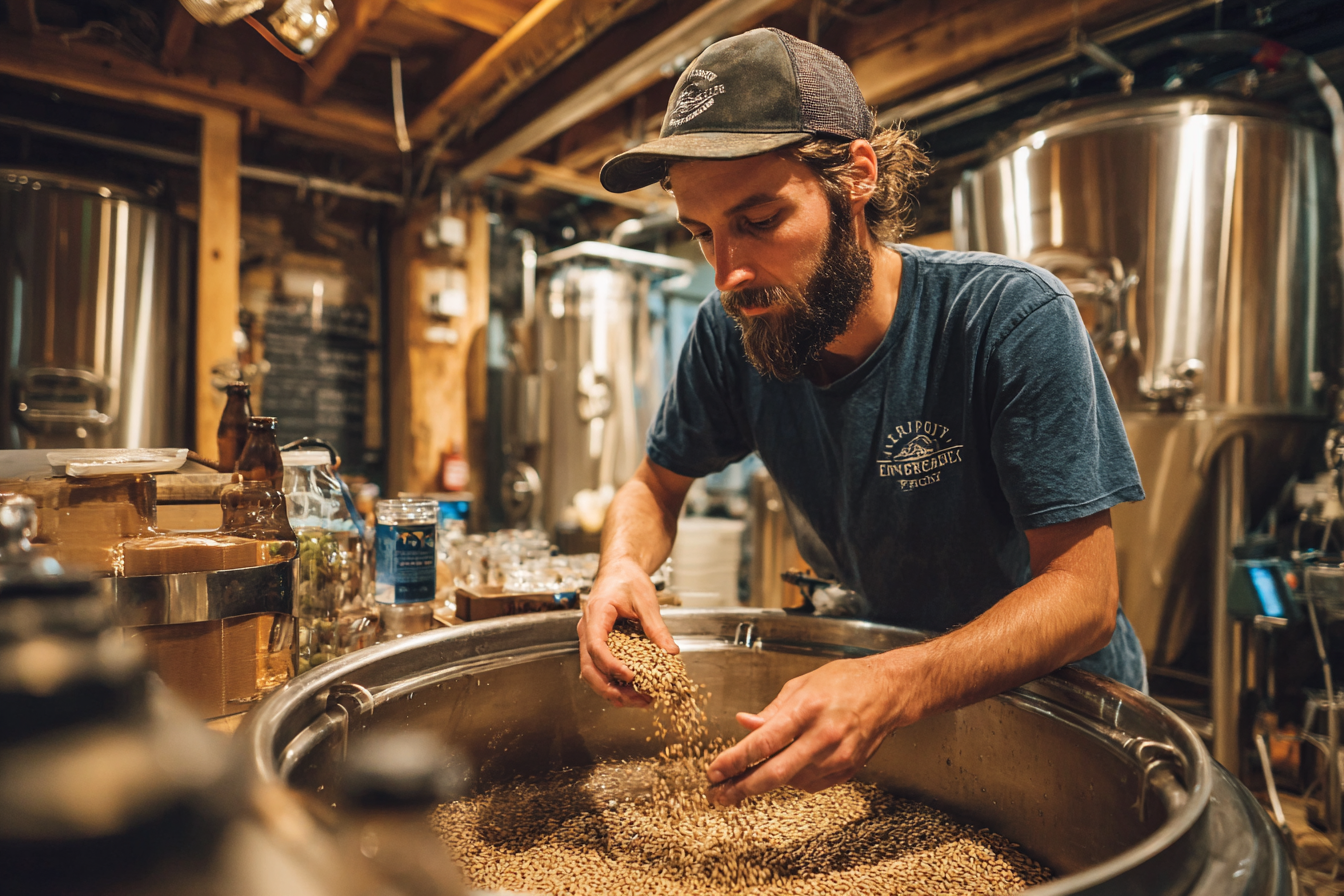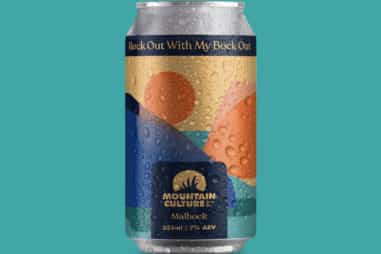Crafting a Rye IPA at home is a rewarding experience for any craft beer enthusiast. This style combines the distinctive spiciness of rye malt with the vibrant and often citrusy hop character of an IPA, resulting in a beer that’s complex, flavorful, and a bit adventurous. Whether you’re a seasoned homebrewer or just looking to expand your brewing repertoire, this step-by-step guide will walk you through the entire Rye IPA brewing process — from selecting ingredients to bottling your finished beer. Let’s dive into the unique considerations and techniques that make this beer style stand out.
Ingredients Specific to Rye IPA
The cornerstone of a Rye IPA is, naturally, the rye malt. Rye brings a unique spicy, slightly dry, and sometimes grainy flavor that adds depth and complexity to the beer. It also contributes to a distinct mouthfeel, often described as crisp or slightly creamy. When selecting rye malt, brewers often use it alongside a base malt such as 2-row barley malt to provide fermentable sugars and balance the flavor.
Beyond malt, hops are critical in IPA-style beers. Rye IPAs usually showcase aromatic and flavorful hops — varieties like Citra, Centennial, Simcoe, Amarillo, and Mosaic are popular choices. These hops contribute citrus, pine, tropical fruit, and floral notes that complement the spicy qualities of rye malt. The hop schedule will typically include additions during the boil and dry hopping during fermentation to maximize aroma and bitterness balance.
Yeast selection also plays a crucial role. Many Rye IPAs use clean American ale yeast strains, such as Wyeast 1056 (American Ale) or Safale US-05, which ferment smoothly and highlight hop and malt characteristics without adding excessive esters. However, some brewers experiment with English ale yeasts or saison strains for a different yeast-derived complexity, but for the classic Rye IPA, a clean yeast is ideal.
Mash and Mash Temperature Considerations for Rye
Mashing is where the starches in malted grains convert into fermentable sugars. Rye malt, however, presents some challenges during this stage due to its higher beta-glucan content compared to barley malt. Beta-glucans increase wort viscosity, making lautering (the process of separating the wort from the grain) potentially slow or difficult.
To counter these challenges, many brewers employ a mash temperature on the lower side, typically around 148°F to 152°F (64°C to 67°C), which promotes a more fermentable wort with a drier finish. Lower temperatures encourage beta-amylase activity, breaking down starches into simpler sugars. However, because rye’s beta-glucans can cause stickiness, it’s often recommended to include a beta-glucanase rest around 40-50 minutes at approximately 122°F (50°C), especially if using a high percentage of rye malt.
Many brewers limit rye malt to 20-30% of the grist to avoid excessive viscosity, mixing it with barley malts which have better lautering properties. Additionally, maintaining a thorough mash rest and potentially using rice hulls during the mash can help create a better flow through the grain bed without compromising flavor.
Boiling and Hop Additions
After mashing and lautering, the wort is boiled—typically for 60 to 90 minutes. The boil serves several purposes: it sterilizes the wort, drives off unwanted volatile compounds, and allows hop additions to add bitterness, flavor, and aroma.
In brewing a Rye IPA, careful hop scheduling is key. Early boil additions (at 60 minutes) primarily contribute bitterness, helping to balance the malt and rye spiciness. Later additions, at 15 or 5 minutes, and especially at flameout, preserve hop flavor and aroma compounds which are otherwise driven off by prolonged boiling.
Dry hopping is a signature technique in IPA brewing, and Rye IPAs benefit greatly from it. Adding hops after the primary fermentation has slowed (typically between days 3 and 7) infuses intense hop aromas without adding bitterness. Many brewers choose aromatic hops with bright, citrus, pine, or tropical notes for dry hopping to complement the rye character.
Fermentation Tips for Maintaining Rye Flavors
Fermentation can either highlight or mask the flavors imparted by rye malt. Using a clean, well-attenuating yeast strain helps maintain the crisp, spicy character of rye without overshadowing it with strong esters or phenols. Controlling fermentation temperature between 65°F and 70°F (18°C to 21°C) is typically ideal for American ale yeasts to keep fermentation steady and flavor profiles clean.
Since rye can contribute a slightly complex malt profile, it’s important not to overpower it with excessive yeast-derived flavors. Monitoring fermentation vigor and avoiding overpitching yeast helps achieve balanced attenuation and maintain the rye’s distinctive notes. Fermenting slightly longer to allow yeast to clean up compounds can help the beer mature more harmoniously.
Conditioning and Packaging
Once primary fermentation and dry hopping are complete, conditioning the Rye IPA properly is crucial for flavor development and stability. Cold conditioning (lagering) the beer at near-freezing temperatures for a couple of weeks helps mellow out harsher elements and encourages the development of smoothness while preserving aroma.
Packaging should be done with care to avoid oxygen exposure, which can quickly degrade hop aroma and introduce off-flavors. Whether bottling with priming sugar or kegging with CO2, maintaining a proper carbonation level (usually between 2.3 and 2.7 volumes of CO2) ensures a refreshing mouthfeel and enhances the beer’s aromatic qualities.
Troubleshooting Common Issues
Brewing a Rye IPA comes with its own set of challenges, but most can be managed with good brewing practice:
- Sticky Mash or Slow Lautering: Rye’s beta-glucans can cause a gummy mash. Use rice hulls to improve grain bed permeability or include a beta-glucanase rest to break down these compounds.
- Excessive Spiciness: While rye adds character, too much (above 30%) can make the beer overly harsh or astringent. Balance malt percentages and adjust mash temperatures for a smoother profile.
- Muted Hop Aroma: Oxygen exposure during packaging or extended aging can fade hop aromas. Dry hop late and package quickly with minimal oxygen contact.
- Cloudy Beer: Rye contributes proteins that can increase haze. Cold crashing and fining agents can help clarify your beer without sacrificing flavor.
Finishing Up with Tasting Notes
When your Rye IPA is ready, pour it into a glass and take a moment to appreciate the interplay of flavors and aromas. Expect a bright, slightly spicy malt backbone from the rye malt, balanced by the bold bitterness and aromatic punch of your hop choices. The beer’s mouthfeel should be lively, with a crisp dryness that invites another sip. A successful Rye IPA strikes a harmonious balance between malt complexity, hop intensity, and refreshing drinkability.
Brewing a Rye IPA is both an art and a science — requiring attention to detail, patience, and a willingness to experiment. With this step-by-step process in hand, you’re well-equipped to create your own memorable Rye IPA that celebrates the spirit of craft brewing.







